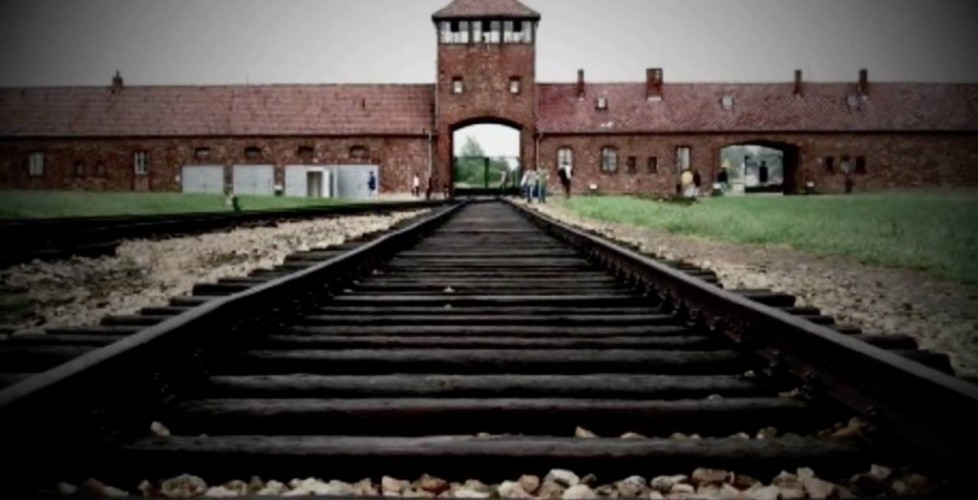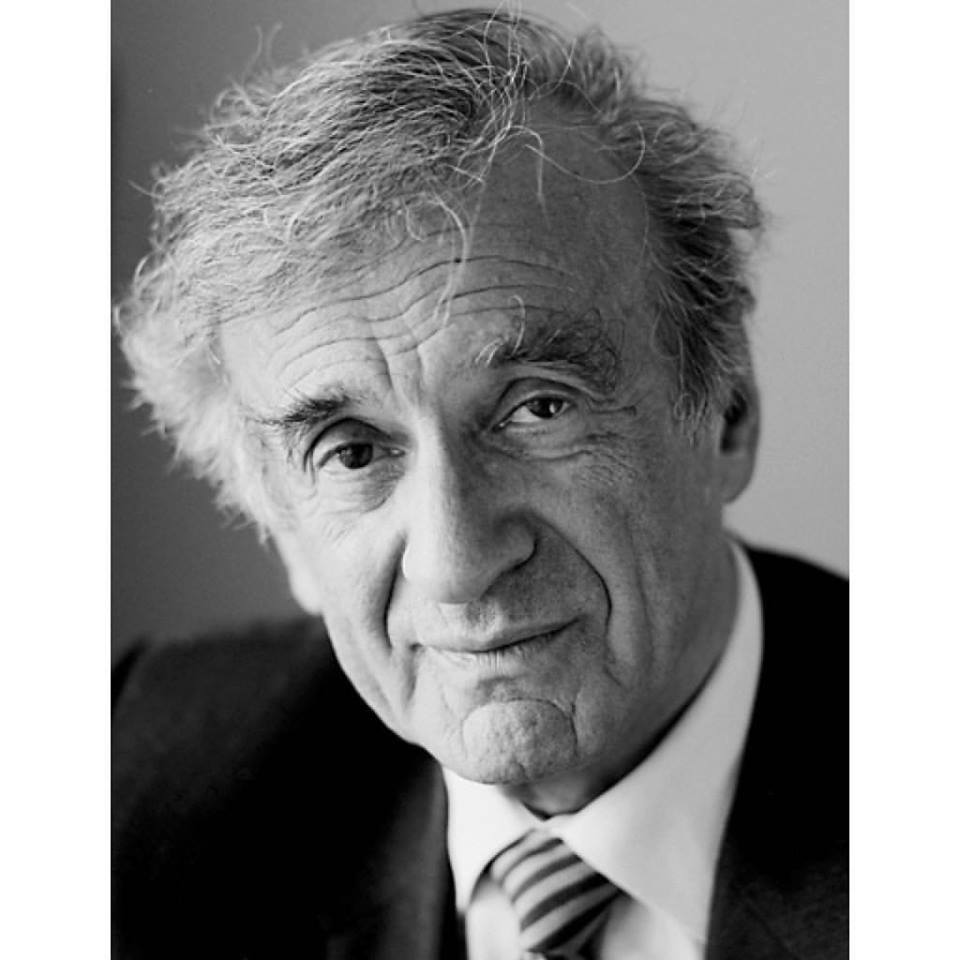Elie Wiesel’s Night through the Eyes of a Teacher
There are lots of things I remember about my childhood. Perhaps my earliest memory of all is that of my father snuggling up with my younger sister and I and reading aloud to us. He’d do all the voices of the characters; and once I was old enough to read, I realized often times my father infused his own take on the plot. My love of reading was fostered all throughout my youth with summer trips to the library, hours long (or so they seemed such as a child) excursions where I’d sit on the floor plucking various R.L. Stine books from the shelves and get lost in Fear Street. I vividly remember falling in love with Huck, crying at the end of The Pigman, and empathizing for Frankenstein. But what I don’t remember reading is Elie Wiesel’s Night.
Now, I know I read it. I remember learning all about the Holocaust in middle school. I even remember this video project I did for my English class pretending to be Miep Gies. As a matter of fact, I did such a good job with the costuming and acting the teacher didn’t believe it was me and called my mom to verify. But again, lost in the thousands, maybe even millions of pages of books I have read and loved—I do not recall reading Night in my youth. Perhaps that’s because I was supposed to teach it as an adult to kids. Perhaps I don’t recall because my charge was to feel every bit of it so intensely that when I brought it to my 9th graders, I lived the horrors of Nazi Germany in real-time. Who knows? But here’s what I do know, teaching Night to a classroom of students is one of the most powerful things I have ever experienced. Night and its themes of maintaining, losing, then rediscovering one’s identity, tolerance, and the importance of speaking up is to date one of my crowning achievements as an educator. For me, Wiesel’s Night, a vessel to teaching the world so much about more than just history, allowed me as a Jewish woman to honor my ancestry by giving a voice to those 6 million who didn’t get one.
In today’s era with social media and the immediacy of things, crafting a unit to teach children is always hard. Short of dressing like a clown while spinning on my head, lighting myself on fire, and gargling—my students [or shall I just say students] are not phased by much. So 2 years ago when I went about teaching Night for the first time, I wanted to make sure it was done right. And by right, I wanted to create an environment where respect would be paid to the 12 million that were murdered during World War II, while especially highlighting the iron-will and perseverance of the Jewish people. Bringing old world Europe of 1933-1945 to life would pose as a major challenge to these Angelenos—how do I reach these kids? And then it hit me! Film, photos, and survivor testimonials would bring this to life; for pictures are universal and speak to everyone regardless of reading level! And there so began our adventure together.
Teacher and student, student and teacher. Many times my voice often trembled as I fought back tears in reading Night aloud to my students. My heart heavy with an indescribable pain and guilt for my people in the sense I was helpless. But then it dawned upon me, I wasn’t helpless. I was doing precisely what Jews do—carry on. By being a teacher and exposing my students to something they’d otherwise only read in a paragraph in their 10th grade history text book; those that died were not in vain. Their memories stayed alive within the walls of my classroom as we walked through history, grappled with ourselves, and ultimately struggled with our own faltering identities. We used Wiesel’s Night as a mirror that shone back on ourselves to delve deep into who we are and vowed that under no circumstances to allow that to ever be compromised. It was through reading Night, filled with such pain and suffering that grew love and harmony. It unified my students, brought me closer to them, and in the end they learned so much more than how to just write an essay. They learned compassion, true empathy, and that the greatest sin of all time is to stand idly by in the face of injustice or anything you feel in your heart is wrong.
Night transcends its short pages chronicling Wiesel’s youth from his simple life in Sighet, Transylvania (now Romania). From the forcible ghetto of the Jews, to Auschwitz-Birkenau, to surviving the infamous 350 mile Death March when the Liberation Army was in hot pursuit of the Germans. Wiesel’s Night is a must read for all of humanity. A reminder that while we have not forgotten the atrocities of World War II, we are fighting everyday for love, liberty, justice, democracy, equity, acceptance, and freedom.
I cannot imagine walking in Wiesel’s shoes. Surviving one of mankind’s most horrific displays of hatred to only grow old in a time where people cannot love whom they want freely and suicide bombers are killing people in throngs all in the supposed name of God. Oh, how my heart aches for such a man to survive something so terrible to leave a world on the cusp of not destroying ourselves in nuclear annihilation but simply rooted in black, blacker, and blackest dead of night hate. Wiesel’s fight to survive camp has not ended, it has only just begun.
“We must take sides. Neutrality helps the oppressor, never the victim. Silence encourages the tormentor, never the tormented.”
~ Elie Wiesel
May your words and tale of survival echo for all eternity. Thank you for your courage and bravery. Thank you for honoring the Jewish people by giving the 6 million that perished at the hands of Nazi Germany a voice. Thank you for always being a champion for injustice. Thank you, thank you, thank you. I’d say the world became a dimmer place today with your passing; but that’d be a lie. You will continue to live and inspire for all of time.
RIP Elie Wiesel.


July 2, 2016 @ 6:44 pm
Gratitude for sharing this powerful post, a fitting tribute to a brilliant man who spent his life creating meaning from the ashes of humanity’s darkest moments. You truly have a gift for teaching and guiding and I am honored to call you my friend! xo
July 3, 2016 @ 3:03 pm
Thank you so much for reading Beth and for continuing to be light in this world!
July 3, 2016 @ 6:29 am
This article is the most eloquent piece you have ever written. Keep writing.
July 3, 2016 @ 3:03 pm
Thank you for reading AND commenting Mom. I love the feedback!
July 3, 2016 @ 11:15 pm
As a former teacher I identity with figuring out how to make an experience have meaning and impact. You sound like a wonderful instructor because you not only taught them the truth, you also created a space for them feel. Empathy for others is crucial in today’s world.
July 5, 2016 @ 12:24 am
Thank you so much for reading and taking the time to comment, Marcia. I agree that in today’s world, empathy is crucial. It is up to us as teachers to lead the charge and guide our students.